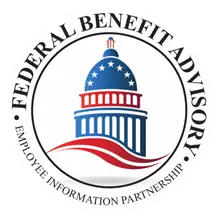In 1986, the Federal Employees’ Retirement Security Act established a new qualified retirement plan known as the TSP or Thrift Savings Plan. Similar to a 401k, this plan is offered to federal employees and members of the armed forces.
Today, many federal employees find themselves with questions about their TSP. These questions include the benefits and risks, if there is a required minimum distribution, and how to manage it proactively.
This article will cover all of these questions and more, preparing you for a comfortable retirement with your personal Thrift Savings Plan.
What is a TSP (Thrift Savings Plan)?
A Thrift Savings Plan (TSP) is a defined contribution plan similar to a 401(k). It allows federal employees the opportunity to establish and contribute to a retirement account with certain tax advantages.
The two types they can choose between are a traditional TSP (where money is taxed at the time of withdrawal) or a Roth TSP (where money is taxed as it is contributed to the account).
For FERS employees, TSPs are offered as part of a three-fold retirement package along with a FERS annuity and Social Security. For CSRS employees, the TSP is simply provided as a supplement to an already existing retirement annuity.
How Does Eligibility Work?
Eligibility for a Thrift Savings Plan is simple. Here is a list of employees who are eligible:
- Federal Employee Retirement System (FERS) employees. Usually, these are government employees that were hired on or after January 1st, 1984.
- Civil Service Retirement System (CSRS) employees. These are government employees hired before January 1st, 1984, who did not switch over to FERS.
- Members of the uniformed services.
If you are one of the above, you must also be actively employed and able to contribute. As long as this is true for you, you’re eligible for a TSP!
The TSP also works off an automatic enrollment system, so if you’re eligible and have already been employed by a federal entity for over sixty days, you are likely already contributing.
What Does a TSP Do?
Your Thrift Savings Plan is designed to give you the option to invest in one or several different investment funds – up to a certain amount. In 2021, this contribution limit is $19,500. However, those who are 50 and older have a catch-up contributions option and can invest an additional $6,500 per year.
According to the Federal Retirement Thrift Investment Board, the funds available to invest in are as follows:
- The Government Securities Investment (G) Fund
- The Fixed Income Index Investment (F) Fund
- The Common Stock Index Investment (C) Fund
- The Small Capitalization Stock Index (S) Fund
- International Stock Index Investment (I) Fund
As the TSP holder, you are allowed to select any combination of the above funds to invest in, or you can choose to invest in a lifecycle fund, which has a ratio of the above already selected for you to invest in.
Thrift Savings Plan Benefits and Risks
A TSP account can have outstanding benefits if appropriately utilized, but there are also some potential downfalls you should be aware of. As with anything, it’s best to be mindful of both the benefits and the risks so that you can make informed decisions that are best for your lifestyle.
Benefits
A TSP is an excellent savings and investment plan because of the opportunity for matching contributions that it presents. In essence, 5% of your basic pay contribution can be matched each pay period. On the first 3 percent of this, you will see your pay matched dollar for dollar. On the remaining 2 percent contributed, you will be matched at fifty cents per dollar.
Additionally, this form of retirement savings and investment plan allows you to pick and choose where you want your money invested and offers an option with preselected ratios if you aren’t sure. This way, you can customize your investment portfolio to meet your own preferences.
There is a cost for investing in a TSP. For retirement plans in this current day and age, it’s pretty common to see 1% management fees. However, with a TSP, the administrative fees are between 0.026% and 0.068%, meaning that for every $100,000 invested, you pay less than $70.
Risks
Regardless of how good a plan might be, there are always risks involved with investing. The TSP website does an excellent job of explaining the risks of each investment option in federal retirement thrift investment as follows:
G Fund:
The G fund can be a safe harbor for holding your money during difficult times.
F Fund:
The F fund comes with high market risk and has potential losses.
C Fund:
C fund returns fluctuate according to the market, so you can’t count on any specific amount of returns. It also carries the risk of not outpacing market inflation.
S Fund:
Like the C fund, the S fund is also subject to market risk due to value decrease and market inflation risk.
I Fund:
The I fund risks increasing or decreasing with the market, fluctuating with currency values, and not outpacing market inflation. The I fund is an international investment fund, which includes certain Asian markets.
How to Proactively Manage Your TSP
There are a few things you can do to ensure you’re getting the most out of your Thrift Savings Plan, including reviewing your contributions and ensuring your TSP is set to your own preferences. Here are some good ways to do that:
Review Your Contributions
As stated before, the TSP allows you to contribute up to a certain amount per year. Make sure you are reviewing your contributions so that you stay on track for retirement. Also, keep in mind when you retire or if you retire early under VERA, you will no longer be able to contribute to your TSP.
Choose a Roth or Traditional TSP
Depending on your lifestyle, you may be better suited for one or the other. With a Roth TSP, your taxes are taken out before funds are contributed so that you can withdraw tax-free at retirement.
With a Traditional TSP, however, you are taxed at retirement instead of at contribution time. Depending on how you manage your money, you should select the plan that’s best for you.
Diversify Your Portfolio
We highly recommend not placing all your eggs in one basket— that is, don’t push your entire portfolio toward one investment fund. Be sure to diversify. The Lifecycle fund is suitable for this if you are uncomfortable doing it yourself, but we recommend customizing it if possible.
Establish a Beneficiary
Your beneficiary is the person that will be receiving your TSP contributions after your passing. This can be anyone, from a person to a charitable organization. However, keep in mind that the funds in your TSP must stay in the TSP after your death unless they are being paid out.
Your funds can not be rolled over to a retirement plan belonging to your beneficiary. However, beneficiary arrangements can be quite complex, so it’s important to speak with a planner to avoid potential mistakes.
Be Aware of RMD
RMD, or required minimum distributions, are in place to ensure you begin withdrawing money from your TSP promptly. Here are the required minimum distributions for your Thrift Savings Plan according to TSP.gov:
- You are required to begin making RMD withdrawals from your TSP no later than the year you turn 72.
- If you do not begin withdrawing in the year you turn 72, distributions will be sent to you by April 1st of the following year.
- If you retire or separate from your job after age 72, you are required to make RMD withdrawals immediately.
- If you’re already receiving payments at age 72, these will count toward satisfying the IRS RMD. If the amount you are withdrawing falls short of the RMD, you will be issued the remaining RMD balance in December of that year.
- TSP mandates that you begin taking your RMD by August 1st once you reach your required beginning date or TSP will consider that you will have abandoned your TSP.
Conclusion
TSP accounts can be highly beneficial in retirement if you know how to use them properly. By now, this article should have given you information on how you can manage your TSP and how you can do so according to your individual lifestyle needs.
Do you need help understanding TSP accounts and funds or federal retirement in general?
If you would like to learn more about any of the information above or would simply like help to navigate your TSP, be sure to connect with one of our planners.
We’re here to help you retire comfortably and securely, so don’t be afraid to contact us today.


